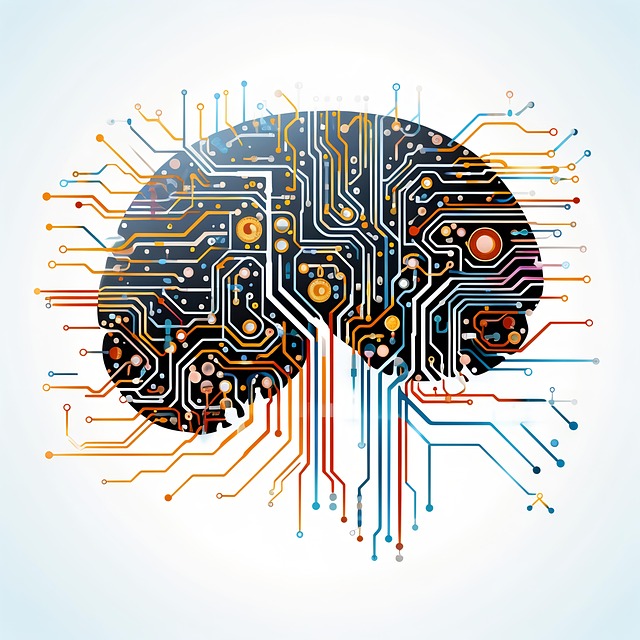AI systems for enhancing truck repair workflows streamline operations through advanced algorithms and machine learning. By predicting issues, optimizing scheduling, and facilitating accurate diagnostics, AI reduces downtime, boosts efficiency, and cuts costs. Implementation involves assessing current workflows, selecting relevant AI tools, integrating them into infrastructure, testing via pilot programs, and then expanding across the team.
In today’s digital era, Artificial Intelligence (AI) is transforming industries, and truck repair isn’t an exception. This article explores how AI systems can significantly enhance truck repair workflows. We delve into understanding AI’s role in this domain, providing a step-by-step guide to implementing these technologies, and highlighting strategies for optimizing processes. By leveraging AI, repair teams can achieve greater efficiency, accuracy, and cost savings, revolutionizing the way they service heavy vehicles.
- Understanding AI's Role in Truck Repair
- Implementing AI Systems: Step-by-Step Guide
- Optimizing Workflows for Enhanced Efficiency
Understanding AI's Role in Truck Repair

AI systems have emerged as powerful tools, offering transformative potential in the realm of truck repair. By leveraging advanced algorithms and machine learning capabilities, these AI systems for enhancing truck repair workflows can significantly streamline processes that were once time-consuming and labor-intensive. From predictive maintenance to accurate diagnostics, AI is revolutionizing how repair teams approach vehicle maintenance.
For instance, AI can analyze vast amounts of data from sensors and historical records to predict potential issues before they become major repairs. This proactive approach allows for scheduled maintenance rather than reactive fixes, reducing downtime and enhancing overall fleet efficiency. Additionally, AI-driven diagnostic tools can quickly identify faulty components or systems, enabling technicians to focus on specific repair tasks, thereby optimizing the entire truck repair process.
Implementing AI Systems: Step-by-Step Guide

Implementing AI systems can dramatically enhance truck repair workflows, streamlining processes and boosting efficiency. Here’s a step-by-step guide to help your team navigate this transformation:
1. Assess Current Processes: Begin by thoroughly understanding your current truck repair workflow. Identify pain points, inefficiencies, and areas where manual labor could be reduced or improved with AI assistance. This step ensures you target the right processes for automation.
2. Choose Relevant AI Applications: Based on your assessment, determine specific AI applications that align with your needs. For instance, computer vision can aid in diagnosing issues by analyzing engine parts, natural language processing (NLP) can automate report generation from repair notes, and predictive analytics can anticipate maintenance needs based on vehicle history.
3. Integrate AI Tools: Select and integrate suitable AI tools into your existing infrastructure. This might involve installing specialized hardware or software, ensuring data compatibility, and training personnel to use the new systems effectively. Clear communication and comprehensive training sessions are crucial during this phase.
4. Pilot Testing: Launch a pilot program with a small group of repair teams to test the AI systems in real-world scenarios. Gather feedback from technicians and analyze the impact on productivity, error rates, and overall workflow efficiency. This iterative approach allows for necessary adjustments before full-scale implementation.
5. Expand Implementation: Once successful results are achieved through pilot testing, gradually expand the use of AI systems across your entire truck repair team. Monitor performance metrics closely to ensure continued improvements and address any emerging challenges promptly.
Optimizing Workflows for Enhanced Efficiency

In today’s digital era, embracing AI systems for enhancing truck repair workflows can significantly revolutionize the way teams operate. By automating routine tasks and streamlining processes, AI enables folks to focus on more complex repairs, fostering a more efficient and productive environment. This technology can optimize scheduling, predict part replacements, and provide real-time diagnostics, thereby reducing downtime and improving overall fleet management.
AI-powered tools offer a symphony of benefits designed to navigate the labyrinthine complexities of truck repair. They enhance problem-solving abilities, ensure accurate diagnoses, and promote consistent maintenance practices. This not only boosts the quality of repairs but also creates a more organized and cost-effective workflow, making it a game changer for any modern fleet operation.
AI training is transforming the landscape of truck repair, offering a vibrant and efficient approach to an otherwise complex process. By implementing AI systems, repair teams can optimize their workflows, reducing time and resource-intensive tasks. As these technologies continue to evolve, folks in the industry can expect even more sophisticated tools to enhance their work, making truck repair a smoother, more effective symphony of modern innovation.
